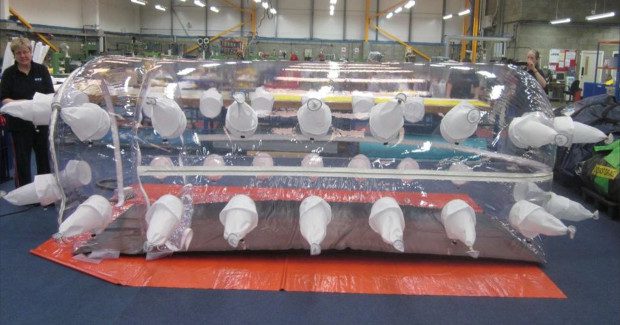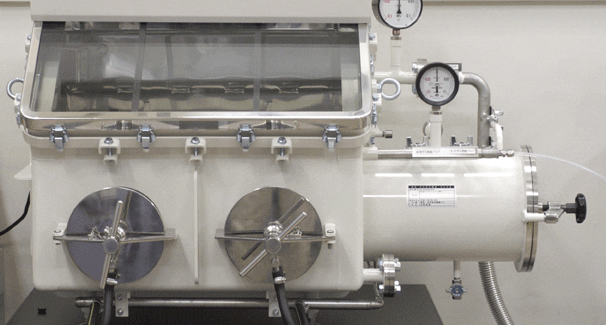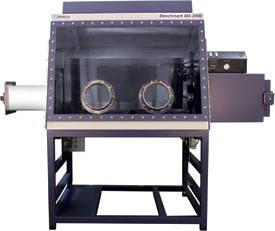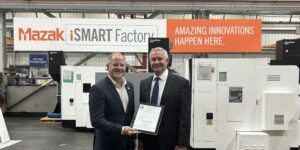Flexible Enclosure Welding
These new enclosures use advanced engineering polymers that are ideal for controlling particulate contamination in aerospace, automotive, biochemical, medical, food and beverage, semiconductor and nuclear welding applications.
Posted: November 12, 2015
Many of the metallic materials in common use now are prone to contamination when in contact with atmospheric gases such as oxygen, nitrogen and hydrogen. This is particularly the case when this contact occurs at the high temperatures prevailing in fusion welding.
Control of contamination can be effected in the majority of cases by shielding the local welding area with a protective inert gas such as argon, as in GTAW (TIG welding) or by introducing a protective slag as in MMAW (stick electrode welding). With many metallic materials however, including some titanium and nickel alloys, more stringent precautions are necessary and to ensure satisfactory weld quality the entire joining process needs to be undertaken inside a vessel from which all potential contaminating products have been removed.
A glove box also provides the means of providing protection against contamination by using an inert gas such as argon to replace air by flushing or purging, which has become the preferred term in this context. However, these are still relatively expensive to manufacture. For many years the cost of metal enclosures precluded all but the major companies taking on work involving fabrication of nickel and titanium alloys. All of these operations are exposed, to some extent, to the need for extreme levels of quality control over cleanliness during manufacture. Contamination introduced during fabrication can so easily lead to loss of strength and corrosion resistance. Particulate contamination raises issues of expensive litigation or at best rejection of product.
https://youtu.be/wbN6-MoaNeM
All standard enclosures are packed in a box 1160 mm x 670 mm x 280 mm, irrespective of size and their shipping weights are typically:
- 2 kg for a 36 in (900 mm) diameter enclosure
- 7 kg for a 48 in (1200 mm) model
- 7 kg for a 60 in (1500 mm) size
The rescue from particulate contamination came a decade or so ago with the introduction of flexible enclosures that exploited the opportunities offered by advanced engineering polymers. These innovative products offered significant attractions over both vacuum and glove box alternatives, a significant reduction in cost, very small floor footprint and availability of a range of sizes from stock. Since that time, new Flexible Welding Enclosures® have been developed and are rapidly becoming the preferred alternative enclosure.
TECHNICAL SPECIFICATION
The vertical sides of these new Flexible Welding Enclosures are made from translucent material. The top is constructed using optically clear sheet. Ultra violet stabilized engineering polymers are used throughout during manufacture. Material thickness is nominally 0.5 mm (480 microns).
A principle access zip is fitted which has a total length typically 60 percent greater than the enclosure diameter, i.e., a 900 mm enclosure will have a 1,400 mm long main zip. Additional entry points provide for operators’ gloves. A service panel incorporates access ports for welding torches and for electrical leads and cooling water supplies. A purge gas entry port and an exhaust valve to vent displaced gas to atmosphere are incorporated into each enclosure. In the unlikely event that a repair is necessary, it can be carried out by the user on site. A kit is provided with each enclosure for this eventuality.
COST
Size for size this range of flexible enclosures costs less than 10 percent of a metal glove box and only 2 percent that of a vacuum system.
FLEXIBILITY
Size and shape can be made to meet customer requirements. Standard models from 0.3 cu m to 3.0 cu m are available from stock. Weight is very low and the enclosures occupy little space – the collapsed volume of a 1.25 m diameter system is less than 0.2 cu m and weighs only 8 kg, which means they can be moved easily and stored efficiently so the floor footprint is minimized.
LARGE VIEWING AREA
The entire upper section is manufactured from optically transparent ultra violet stabilized engineering polymer. This offers the opportunity for use by several operators at the same time – ideal for training purposes.
MULTIPLE ACCESS POINTS
Systems can be manufactured with numerous access locations for personnel gloves and gas/electrical entries. Large leak-tight zips afford easy access for components. Flexible Welding Enclosures are now used by leading manufacturing companies across the globe. The aerospace, automotive, biochemical, medical, food and beverage, semiconductor and nuclear sectors all take advantage of the low cost and ease of use.
Flexible Welding Enclosures provide a high comfort level for operators, rather than having to push firmly into metal corners or rigid Plexiglas edges on welding chambers and glove boxes. Even Rolls Royce, who set purging standards in the early days using vacuum chambers, have purchased more than twenty Flexible Welding Enclosures, along with many major airlines such as KLM, Lufhansa, Swissair, and others.
Huntingdon Fusion Techniques HFT®, Stukeley Meadow, Burry Port, Carms SA16 0BU, UK, +44 (0)1554 836836, Fax: +44 (0)1554 836837, www.huntingdonfusion.com.
.


















